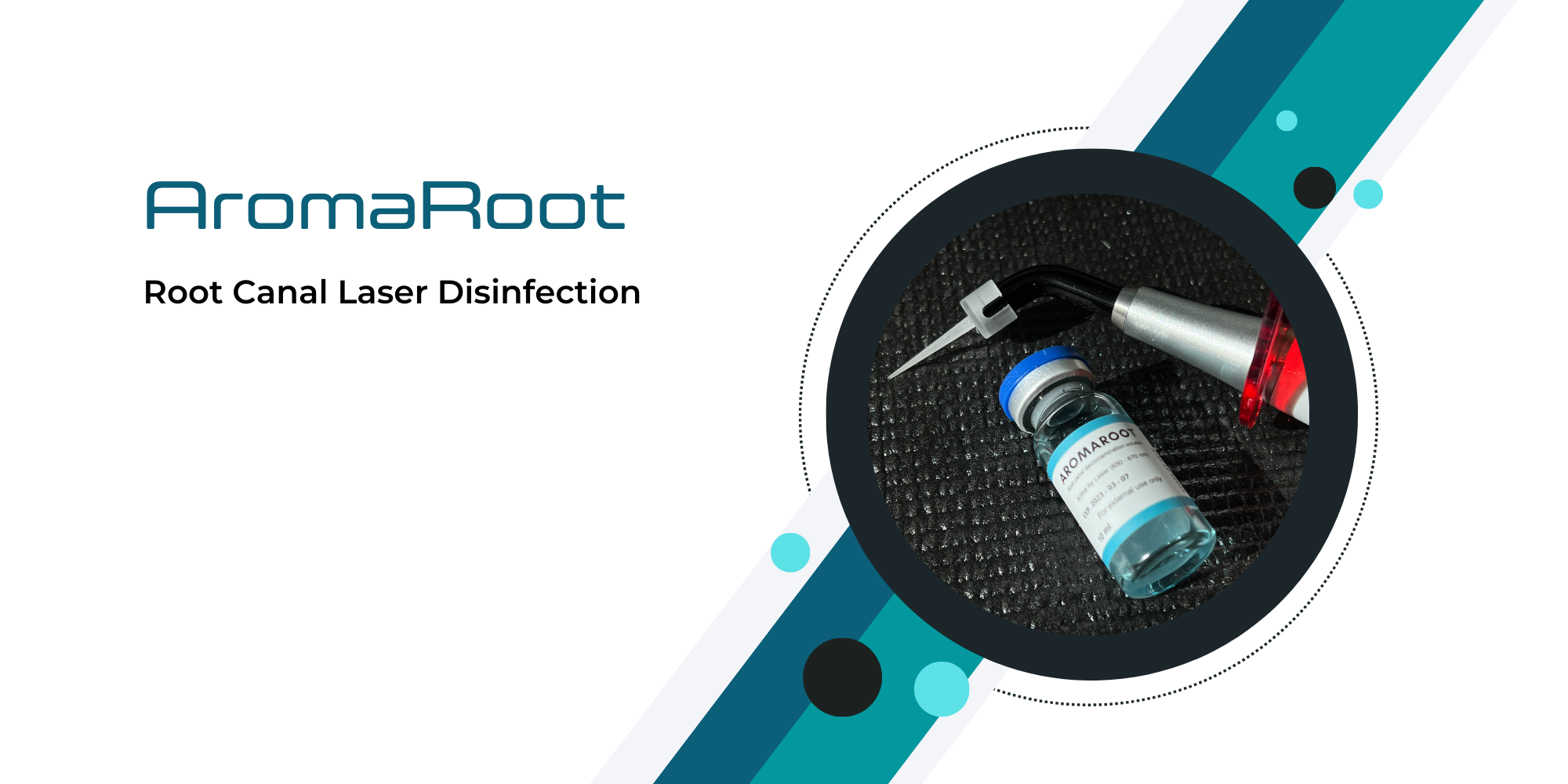- Free Shipping on all U.S. orders over $300

AromaRoot is a novel endodontic irrigant solution currently undergoing FDA review and approval process.
What is AromaRoot?
AromaRoot is a proprietary endodontic irrigant solution developed for disinfection and cleaning of the root canal system. Here are some key details about AromaRoot:
Active Ingredients:
Contains a mixture of Quaternary Ammonium Compounds (QACs) as the primary active agents, including Alkyl Dimethyl Benzyl Ammonium Chloride (ADBAC), Didecyl Dimethyl Ammonium Chloride (DDAC), and Octyl Decyl Dimethyl Ammonium Chloride (ODDAC). Also includes surfactants, detergents, emollients, chelating agents, alkaline salts and water as solvents.
Antibacterial Mechanism:
- The cationic charge on the QACs interacts with the negatively charged bacterial cell membrane.
- This disrupts the membrane integrity, causing leakage of cell contents.
- Eventually leads to complete lysis and death of bacteria.
Smear Layer Removal:
- AromaRoot contains chelators that bind and detach calcium ions from smear layer.
- Laser activation causes cavitation bubbles and shockwaves in the fluid.
- This dislodges and flushes out smear layer debris.
AromaRoot exerts antibacterial activity through the QACs damaging the bacterial cell membrane. It may also aid in smear layer removal through chelation and the physical effects of laser-activated irrigation. The combined antimicrobial and debridement actions make AromaRoot potentially useful as an endodontic irrigant.
Why AromaRoot?
- AromaRoot contains quaternary ammonium compounds (QACs) that provide broad spectrum antibacterial and antifungal activity by disrupting microbial cell membranes. In contrast, EDTA has very limited inherent antimicrobial capabilities.
- The QACs in AromaRoot can help eliminate planktonic bacteria as well as penetrate biofilms. EDTA alone does not have strong biofilm disrupting properties.
- When used with laser activation, AromaRoot provides both chemical debridement from QAC activity as well as physical debridement from improved irrigant dynamics and shockwaves. This dual action enhance smear layer removal.
- EDTA is highly effective at chelating and removing the inorganic smear layer components but can lead to excessive peritubular and intertubular dentin demineralization over time. AromaRoot may provide a less destructive option.
- AromaRoot maintains reasonable smear layer removal while also preserving the collagen matrix better than EDTA.
- The antibacterial and smear removal actions are combined in one AromaRoot solution, eliminating the need to irrigate with separate solutions.





